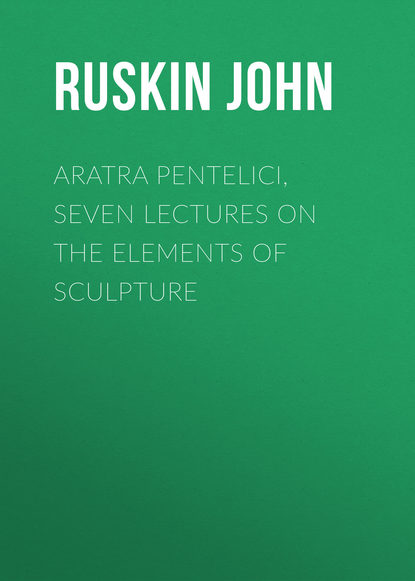 Полная версия
Полная версияAratra Pentelici, Seven Lectures on the Elements of Sculpture
30
Such as the Sculptureless arch of Waterloo Bridge, for instance, referred to in the Third Lecture, § 84.
31
It is strange, at this day, to think of the relation of the Athenian Ceramicus to the French Tile-fields, Tileries, or Tuileries: and how these last may yet become—have already partly become—"the Potter's field," blood-bought. (December, 1870.)
32
This relief is now among the other casts which I have placed in the lower school in the University galleries.
33
The reference is to a cast from a small and low relief of Florentine work in the Kensington Museum.
34
The actual bas-relief is on a coin, and the projection not above the twentieth of an inch, but I magnified it in photograph, for this Lecture, so as to represent a relief with about the third of an inch for maximum projection.
35
This plate has been executed from a drawing by Mr. Burgess, in which he has followed the curves of incision with exquisite care, and preserved the effect of the surface of the stone, where a photograph would have lost it by exaggerating accidental stains.
36
That it was also, in some cases, the earliest that the Greeks gave, is proved by Lucian's account of his first lesson at his uncle's; the ενκοπευς, literally 'in cutter'—being the first tool put into his hand, and an earthenware tablet to cut upon, which the boy, pressing too hard, presently breaks;—gets beaten—goes home crying, and becomes, after his dream above quoted, (§§ 35, 36,) a philosopher instead of a sculptor.
37
The closing Lecture, on the religious temper of the Florentine, though necessary for the complete explanation of the subject to my class, at the time, introduced new points of inquiry which I do not choose to lay before the general reader until they can be examined in fuller sequence. The present volume, therefore, closes with the Sixth Lecture, and that on Christian art will be given as the first of the published course on Florentine Sculpture.
38
These plates of coins are given for future reference and examination, not merely for the use made of them in this place. The Lacinian Hera, if a coin could be found unworn in surface, would be very noble; her hair is thrown free because she is the goddess of the cape of storms, though in her temple, there, the wind never moved the ashes on its altar. (Livy, xxiv. 3.)
39
'Ancient Cities and Kings,' Plate IV., No. 20.
40
The siege of Paris, at the time of the delivery of this Lecture, was in one of its most destructive phases.
41
Note.—The separate edition of this lecture was prefaced by the following note:—
"I have printed this Lecture separately, that strangers visiting the Galleries may be able to use it for reference to the drawings. But they must observe that its business is only to point out what is to be blamed in Michael Angelo, and that it assumes the facts of his power to be generally known. Mr. Tyrwhitt's statement of these, in his 'Lectures on Christian Art,' will put the reader into possession of all that may justly be alleged in honor of him.
"Corpus Christi College, 1st May, 1872."
42
If you like to have it with perfect exactitude, recollect that Bellini died at true ninety,—Tintoret at eighty-two; that Bellini's death was four years before Raphael's, and that Tintoret was born four years before Bellini's death.
43
Julian, rather. See Mr. Tyrwhitt's notice of the lately discovered error, in his Lectures on Christian Art.
44
From the invaluable series of documents relating to Titian and his times, extricated by Mr. Rawdon Brown from the archives of Venice, and arranged and translated by him.
45
Fondaco de Tedeschi. I saw the last wrecks of Giorgione's frescoes on the outside of it in 1845.
46
I beg that this statement may be observed with attention. It is of great importance, as in opposition to the views usually held respecting the grave schools of painting.
47
The upper photograph in S. 50 is, however, not taken from the great Paradise, which is in too dark a position to be photographed, but from a study of it existing in a private gallery, and every way inferior. I have vainly tried to photograph portions of the picture itself.
48
He had, indeed, other and more solemn thoughts of the Night than Correggio; and these he tried to express by distorting form, and making her partly Medusa-like. In this lecture, as above stated, I am only dwelling on points hitherto unnoticed of dangerous evil in the too much admired master.
49
Tintoret dissected, and used clay models, in the true academical manner, and produced academical results thereby; but all his fine work is done from life, like that of the Greeks.



